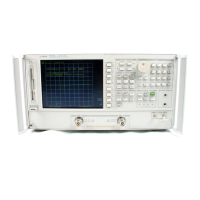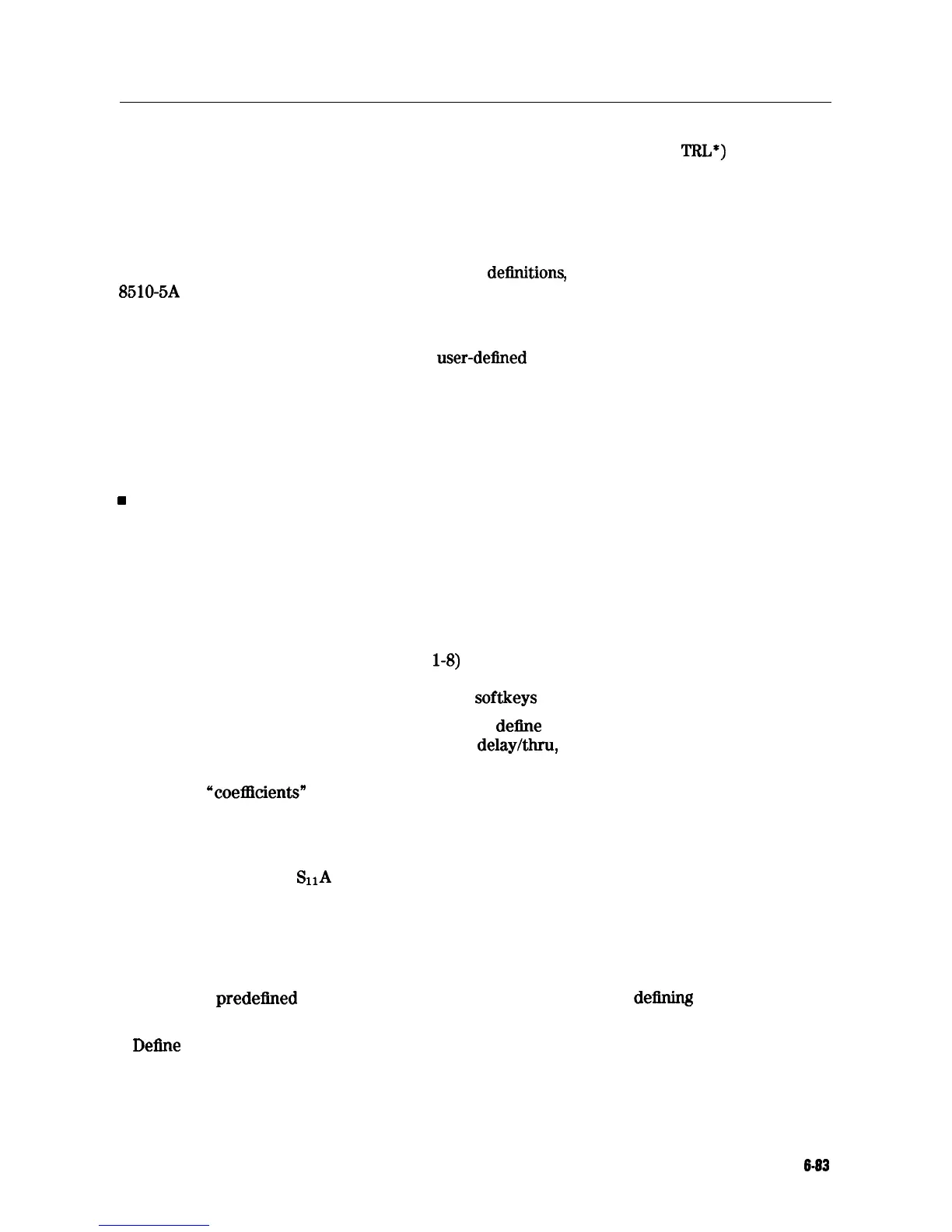Modifying Calibration Kits
Modifying calibration kits is necessary only if unusual standards (such as in
TRL*)
are used
or the very highest accuracy is required. Unless a calibration kit model is provided with the
calibration devices used, a solid understanding of error-correction and the system error model
are absolutely essential to making modifications. You may use modifications to a predefined
calibration kit by modifying the kit and saving it as a user kit. The original predefined
calibration kit will remain unchanged.
Before attempting to modify calibration standard
defhtitions,
you should read application note
8510-5A to improve your understanding of modifying calibration kits. The part number of this
application note is 5956-4352. Although the application note is written for the HP 8510 family
of network analyzers, it also applies to the HP 8753E.
Several situations exist that may require a
user-dellned
calibration kit:
n
A calibration is required for a connector interface different from the four default calibration
kits. (Examples: SMA, TNC, or waveguide.)
n
A calibration with standards (or combinations of standards) that are different from the
default calibration kits is required. (Example: Using three offset shorts instead of open,
short, and load to perform a l-port calibration.)
w
The built-in standard models for default calibration kits can be improved or refined.
Remember that the more closely the model describes the actual performance of the standard,
the better the calibration. (Example: The 7 mm load is determined to be 50.4 ohms instead
of 50.0 ohms.)
Definitions
The following are definitions of terms:
n
A “standard” (represented by a number
1-S)
is a specific, well-defined, physical device used
to determine systematic errors. For example, standard 1 is a short in the 3.5 mm calibration
kit. Standards are assigned to the instrument softkeys as part of a class.
n
A standard “type” is one of five basic types that
defkre
the form or structure of the model to
be used with that standard (short, open, load,
delay/thru,
and arbitrary impedance); standard
1 is of the type short in the 3.5 mm calibration kit.
n
Standard “coef3cients” are numerical characteristics of the standards used in the model
selected. For example, the offset delay of the short is 32 ps in the 3.5 mm calibration kit.
n
A standard “class” is a grouping of one or more standards that determines which of the eight
standards are used at each step of the calibration. For example, standard number 2 and 8
usually makes up the
&A
reflection class, which for type-N calibration kits are male and
female shorts
Procedure
The following steps are used to modify or define a user kit:
1. Select the
predeflned kit to be modified. (This is not necessary for
dehning
a new calibration
kit.)
2.
Define
the standards:
a. Define which “type” of standard it is.
b. Define the electrical characteristics (coefficients) of the standard.
3. Specify the class where the standard is to be assigned.
Application and Operation Concepts
643

